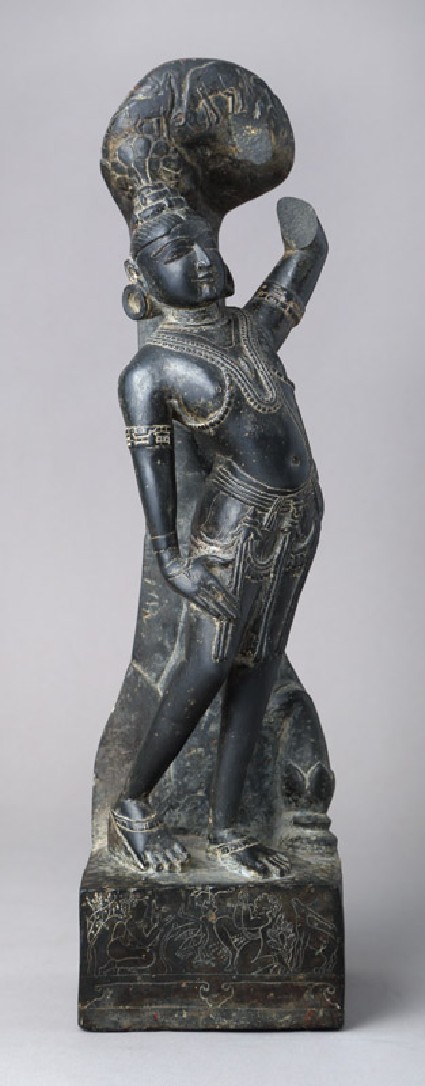Browse: 2 objects
- Reference URL
Actions
Krishna holding up the Govardhana mountain
-
Details
- Associated place
-
Asia › India › west India › Rajasthan (place of creation)
- Date
- 15th - 16th century (1401 - 1600)
- Material and technique
- black marble
- Dimensions
-
49 x 13.5 x 13.5 cm max. (height x width x depth)
7 x 13 x 12.5 cm base (height x width x depth)
- Material index
- Technique index
- Object type index
- No. of items
- 1
- Credit line
- Purchased, 1980.
- Accession no.
- EA1980.2
-
Further reading
Harle, J. C., and Andrew Topsfield, Indian Art in the Ashmolean Museum (Oxford: Ashmolean Museum, 1987), no. 59 on p. 49, pp. 12 & 58, illus. p. 49
Location
-
- currently in research collection
Objects are sometimes moved to a different location. Our object location data is usually updated on a monthly basis. Contact the Jameel Study Centre if you are planning to visit the museum to see a particular object on display, or would like to arrange an appointment to see an object in our reserve collections.
Publications online
-

Indian Art in the Ashmolean Museum
Kṛṣṇa, the cow-herd god, and a form of Viṣṇu/Vāsudeva [see EAOS.38.a and EA1961.168] was originally a folk-hero famous for his exploits both as a child and a young man. These are extensively portrayed in friezes, in miniature painting and, in South India, in bronze [see EA1958.175]. Only one of these themes, however, figures in large sculptural panels or free-standing sculpture; it portrays Kṛṣṇa holding up the mountain Govardhana (“increaser of kine”) near Mathura so that the cowherds and their flocks can shelter from a seven-day storm sent by Indra, anciently the warrior chief of the gods, whose worship was being neglected by Kṛṣṇa and his companions.
This unusual sculpture is from Rajasthan, a region particularly devoted to the cult of Kṛṣṇa and where a late flowering in sculpture and architecture took place, particularly in Mewar (Udaipur) in the 15th and 16th centuries.
The peculiar shape of the mountain is no doubt an echo of the simile used in the Bhāgavata-Purāṇa, the principal source of the Kṛṣṇa legend, when “Kṛṣṇa plucked the Govardhana mountain with one hand and held it playfully as a child might a mushroom”. Instead of the rustication usually employed by Indian sculptors to depict a mountain or mountainous terrain, the “stem” is decorated in a plant-like manner. The base and the “head” of the mushroom-mountain are etched with outline figures of devotees, cattle, birds including peacocks, and vegetation. Little more than graffiti, these may have been added later.
© 2013 University of Oxford - Ashmolean Museum

